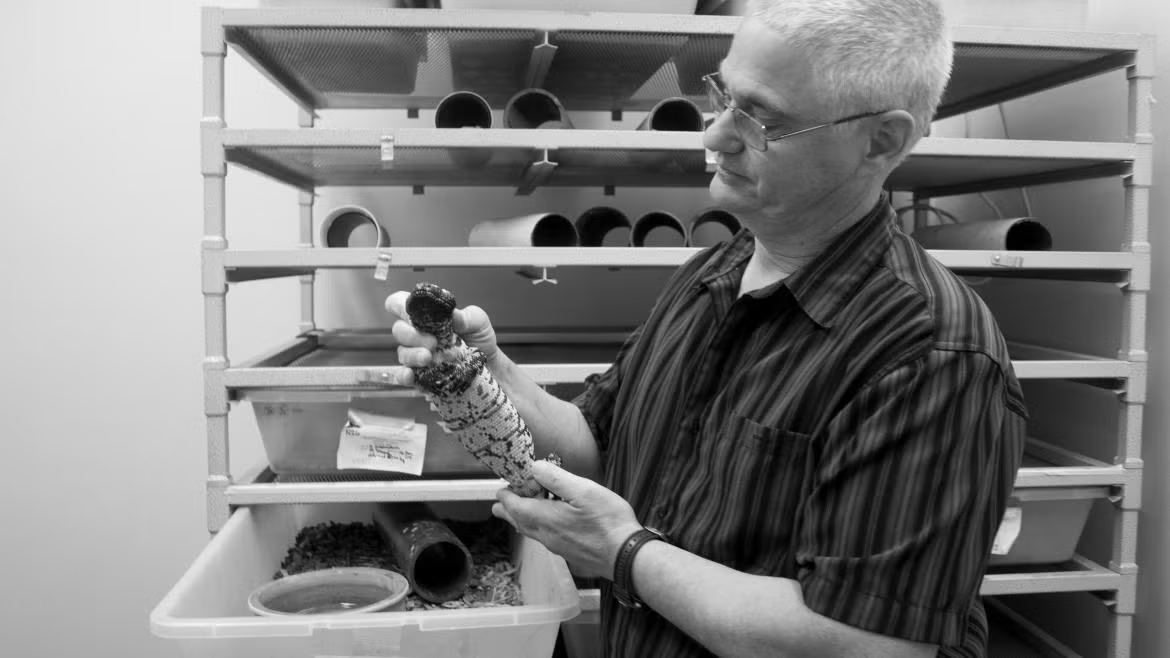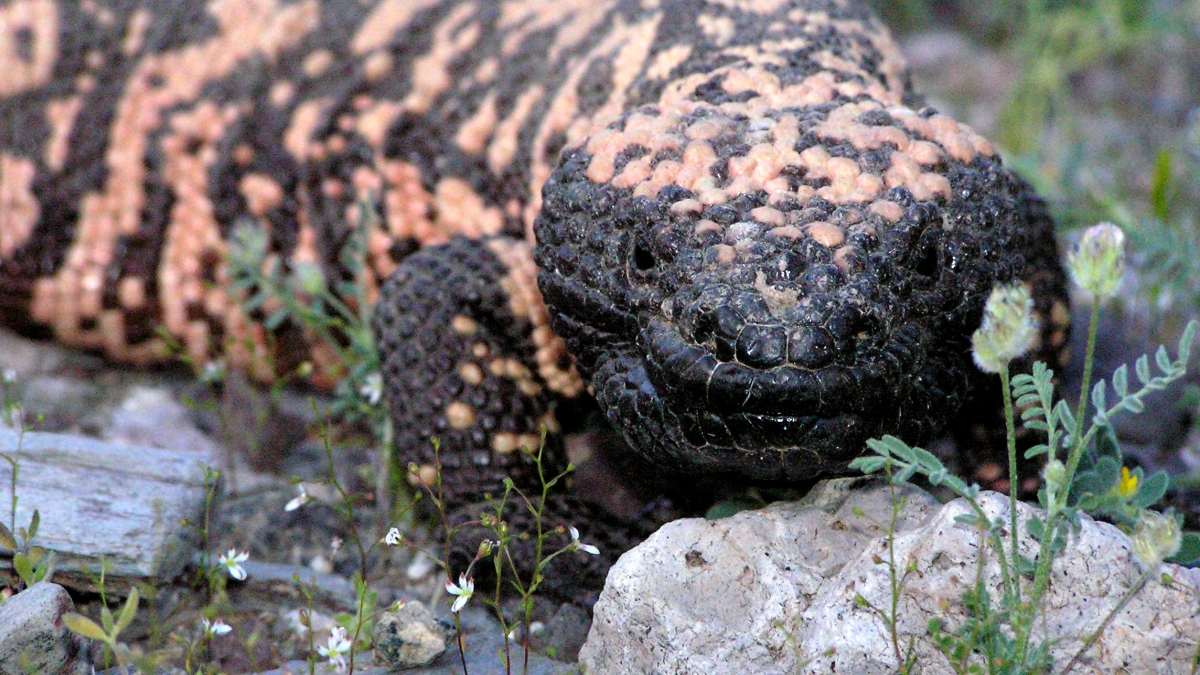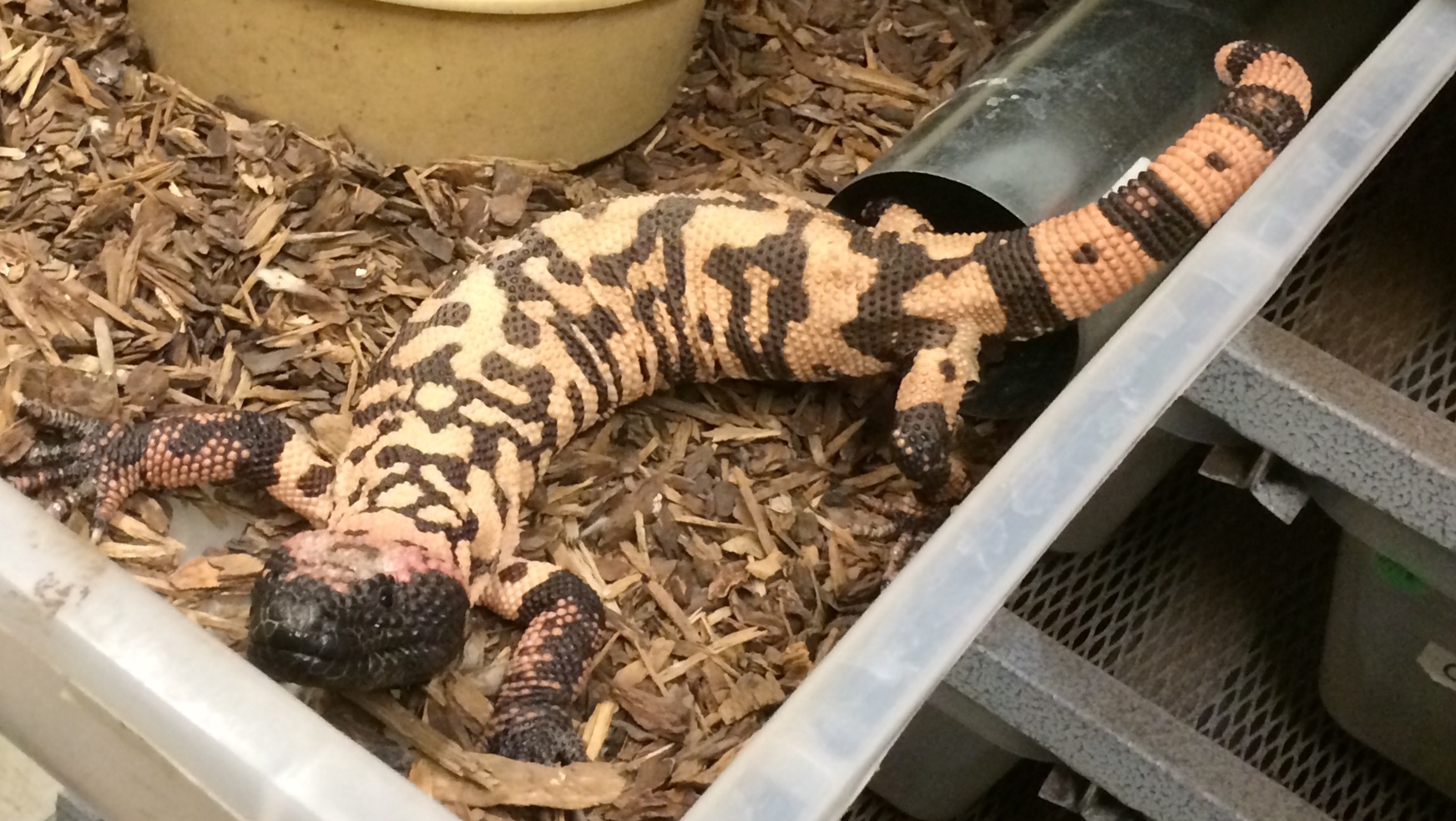It was her very first encounter with a strangely beautiful orange and black beaded Arizona native, the Gila monster — one of only two venomous lizards in the world — that convinced Melissa Wilson Sayres to divert from her 11-year path of studying mammal genomes.
One of Wilson Sayres’ main interests is in studying sex chromosomes. So when she found out that a Gila monster’s sex determination system is the opposite of humans — whereas human males have X and Y sex chromosomes, it is the female Gila monster that has two different-shaped chromosomes — that piqued her interest in the venomous lizard.
The more she learned about the Gila monster — “They store fat in their tails, they’re underground for 11 months a year, they’re venomous, but they don’t use their venom like snakes do,” she said — the more Wilson Sayres, an assistant professor in the School of Life SciencesThe School of Life Sciences is an academic unit of the College of Liberal Arts and Sciences. and researcher in the Biodesign Institute’s Center for Evolution and Medicine, was intrigued.
There is much not yet known about this shy creature, even though human-health uses have been found for its venom. Wilson Sayres and her collaborators have launched a crowdfunding campaign on experiment.com hoping to raise just under $9,000 to develop the very first reference genome for the Gila monster.
Gila heroes
Snakes attack and use their venom to subdue their prey, but Gila monsters don’t need to do that, because they raid nests for their food, Wilson Sayres explained.
“We don’t understand why they’re venomous, and yet their venom is unique, and special in the animal kingdom,” she said.
One unexpected application is to advance human health. Gila monster venom contains a protein, the synthetic form of which has been used to successfully treat type 2 diabetes by helping regulate blood sugar and increase insulin response.
“Moreover what’s fascinating is that we don’t know anything about the Gila monster genome,” Wilson Sayres said. “There are more than 3,000 more species of reptiles than there are mammals, but we have 20 times as many mammalian genome sequences than we do reptile sequences. This means that if you are interested in studying reptile biology ... trying to find a closely related species for comparison is extremely difficult.”
Imagine setting out to study humans, because they are interesting, but the closest related species to humans that you have with a genome is a kangaroo, Wilson Sayres said.
“That's about as close of a reference as we have for the Gila monster right now. So if we really want to understand their biology, get the venom protein evolution, develop resources for conservation — we need this first stage to develop a good reference genome for the Gila monster.”
Crowdfunding
The crowdfunding effort runs through the end of April.
“If we are successful with this crowdfunding campaign, it will be the first attempt at scaffolding for generating a reference for the Gila monster genome,” Wilson Sayres said. “A large-scale genome project takes about $30,000 — it’s quite expensive. In this project we’re just getting the first stage of it.”
If they receive the funds they need, Wilson Sayres and her team will first sequence a reference genome from one individual that they can use to compare Gila monsters with other reptiles, and then they will sequence the DNA of six other Gila monsters to look at genetic variation within the species.
Collecting DNA samples presents a unique challenge — Gila monsters are venomous and shy, which means that they are difficult to locate in the desert, and although it takes a lot to get one to bite you, their bite has been described as lava pouring through your veins, or being hit repeatedly with a thousand hammers.
Luckily for Wilson Sayres, she works next to Dale DeNardo, a physiologist in the School of Life Sciences who has, in the course of studying reptilian adaptations, adopted 18 Gila monsters. He will be contributing his years of Gila monster knowledge to the project, along with the needed blood samples.

Gila monsters that are removed from their territory cannot be relocated to a different part of the Sonoran desert because they typically do not survive the move. Dale DeNardo, a physiologist, has adopted 18 such Gila monsters.
“I’m excited about the genome because it builds the ability for collaboration,” said DeNardo, “and only with collaboration do we really start understanding the complexity of things.”
If researchers from different scientific backgrounds study the same animal, what a behaviorist discovers about the species may be different from what a physiologist, biologist or ecologist may discover. This is because genetics, hormones, behavior, water availability, physical adaptations and the environment all play a role in how animals make survival decisions.
“An animal is an animal. It has to do all those things,” DeNardo said. “And so the more we can get groups of people looking at the same thing, whether it’s the use of a limited-resource environment, if we look at it from different angles, and you probe it from different angles, you’re going to learn more, and you’re going to understand more.”
As a physiologist, DeNardo studies resource limitations, like energy and water scarcity, temperature extremes, and how animals, like Gila monsters and rattlesnakes, cope with these limitations and extremes in their environment.
“For what I do, as a physiologist, a genome isn’t as critical,” said DeNardo, “but to expand what I do, to better understand it through colleagues like Melissa, having that genome becomes a very valuable tool.”
Wilson Sayres is not sequencing the Gila monsters genome for the sake of sequencing another species, DeNardo said. Because of the work he already does studying this venomous lizard, there is potential for the genome to be a very useful tool.
“A lot of my work demonstrates that, this is not just going to be something that sits out there and collects dust,” DeNardo said.
More Science and technology

ASU in position to accelerate collaboration between space, semiconductor industries
More than 200 academic, business and government leaders in the space industry converged in Tempe March 19–20 for the third annual Arizona Space Summit, a statewide effort designed to elevate…

A spectacular celestial event: Nova explosion in Northern Crown constellation expected within 18 months
Within the next year to 18 months, stargazers around the world will witness a dazzling celestial event as a “new” star appears in the constellation Corona Borealis, also known as the Northern Crown.…

ASU researcher points to fingerprints as a new way to detect drug use
Collecting urine samples, blood or hair are currently the most common ways to detect drug use, but Arizona State University researcher Min Jang may have discovered something better.Fingerprints…



